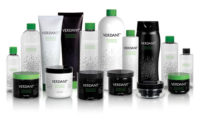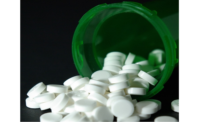Sustainability in packaging, specifically in the labels market, is a goal on the minds of virtually all brands and CPGs. As consumers are looking for more sustainable packaging solutions, the industry is transitioning its focus to meet their demands.
We spoke with Dennis Sweet, Vice President—NWTL, Commercial, Rycoline and Distributors at Sun Chemical, to provide some insight into trends and drivers in the label and narrow web market, including sustainability initiatives and how customers are selecting trusted partners to help meet these specialized needs.
Why is sustainability becoming increasingly important in the packaging industry?
A: Consumers are becoming more understanding of packaging and its impact on the environment. According to a 2020 study by Trivium Packaging, 47% of consumers won’t buy products that are harmful to the environment, and 53% are actively looking for recycling or sustainability information on packaging.
Brand owners are seeing these numbers, adjusting their processes and learning that if they take the dedicated steps needed to vet and study the environmental practices implemented by their suppliers and partners, they will be rewarded for their efforts.
What trends are you seeing with labels and what are label printing customers looking for with inks and coatings?
A: The label industry is constantly evolving. We’re seeing growing interest in shrink sleeve, low migration specifically for food and pharmaceutical, and an industry-wide push to LED-curing at high press speeds. Press speeds are pushing the limits to produce projects quicker than ever before, so we need to formulate inks that print at high fidelity at those speeds and meet sustainability objectives.
In terms of sustainability, our customers are being driven by brand owners to provide more sustainable packaging solutions in all of their products. This sustainability trend is pushing manufacturers, brand owners, converters and CPGs to establish realistic sustainability goals that will help to play a role in achieving a circular economy. These goals are influencing the partnerships formed, as many are hoping to establish relationships with partners who have similar sustainability goals, and the materials used, utilizing renewable resources and raw materials that promote bio-renewability, compostability and/or recyclability.
What new inks and coatings are Sun Chemical introducing to the market that play a role in sustainability for L&NW?
A: Sun Chemical is developing innovative offerings for customers to help answer these sustainability demands and providing the necessary products for their customers to meet their sustainability goals. At Sun Chemical, sustainability is a priority for all of our products — specifically with a focus on compostability, recyclability and bio-renewability.
Sun Chemical has developed suitable ink solutions for different films approved by the Association of Plastic Recyclers (APR). With the guidance of APR, an ink or coating manufacturer can help to explore ways to further boost the rate of PET recycling and ultimately assist CPGs in achieving ambitious sustainability goals around improved PET bottle recyclability.
This collaboration has resulted in the development of removable flexo and gravure inks. The technology allows ink to be removed from post-consumer printed PET packaging in typical existing recycling processes without staining the recovered PET flake or the process wash water. Designed for crystallizable PET shrink sleeves that can be recycled together with the PET bottles, the washable ink allows for the increased recovery of high-quality, clean, recycled PET resin.
Last year alone, Sun Chemical in combination with its parent organization, DIC Corporation, spent more than $100M in R&D, much of which was focused on sustainable solutions. That focus in R&D and industry partnerships led to our launch of SunVisto AquaGreen water-based inks. These inks are formulated with the highest level of bio-renewable resin content the industry has to offer.
We offer a dispenser program that uses automated blending technology to help customers reduce waste and achieve sustainability goals. Sun Chemical has developed a series of highly pigmented dispersions with the MX12 dispenser. Rather than ordering too much, they can make only what is necessary. Producing what is only needed for the right substrate is a big change for a traditional ink company. The dispenser units are the size of a medium-sized printer with a compact design and are lower cost, which is ideal for printers of all sizes.
Sun Chemical has also invested in a color matching technology as a supplement to the dispenser. As the system gets smarter, it’s able to identify which formula will meet a particular color on a specific substrate. This database is used in dispenser technology and our regional color matching centers, enabling our customers to get the right color much faster.
In the narrow web market, Sun Chemical has recently invested in a highly automated manufacturing center to help turn orders around quickly and efficiently. The combination of the manufacturing facility, our dispenser technology, and our color matching technology provides unmatched capabilities and meets customer needs for sustainable solutions and world-class services.
To learn more, listen to the Flexible Packaging podcast “Sustainable Packaging Solutions for Labels and Narrow Web.”
What else are label, narrow web and tag printers looking for from an ink company like Sun Chemical?
A: Typically, a narrow web company is searching for a solution to a particular printing challenge. For example, they may have a troublesome substrate that requires a special formulation to get the adhesion they need, or they might need an ink designed to run at high speed on a new narrow web press.
In order to meet the demand for Sun Chemical’s innovative solutions, we’ve set up the Center for Narrow Web Technology, headquartered in Carlstadt, N.J. This facility is solely dedicated to finding solutions for our customers’ challenging technical issues. We hope this can be an industry resource that customers can utilize for years to come.
Sun Chemical provides on-press support for its customers. We have dedicated product specialists, as well as a team of customer technology service experts covering both the U.S. and Canada. When a problem manifests on-press or on an application, we can help address this issue. These experts are familiar with all types of printing — water, flexo, offset, digital, sheetfed and more.
What types of initiatives are Sun Chemical implementing to help drive sustainability in the packaging industry as a whole?
A: As mentioned, Sun Chemical is prioritizing our sustainability goals across operations and in product development. In fact, we are aligning ours goals with those of the United Nations “2030 Agenda for Sustainable Development” to set corresponding sustainability goals to achieve by 2030. We’re optimistic that this will help ensure necessary actions are taken to enable a more sustainable packaging industry with an overall positive impact on the environment.
Additionally, we’re implementing specific measures at our own facilities, including the reduction of energy and water usage, CO2 emissions, and waste generation. In our Carlstadt R&D facility, we’ve introduced solar panels as a form of operational sustainability. Solar energy allows a facility to be self-sustaining in terms of energy use and contribute to the local community by putting excess energy back into the grid.
As a company, we’ve also introduced the Corporate Sustainability Committee to further strengthen our approach to addressing the sustainability needs of the packaging industry. Comprised of stakeholders across all divisions and regions at Sun Chemical, the Corporate Sustainability Committee will play a key role in a structured approach that will further advance Sun Chemical’s efforts for more sustainable technologies within the various packaging markets.
For more information on what Sun Chemical is doing to drive sustainability in the labels market, visit www.sunchemical.com/poweroflabelpackaging.








